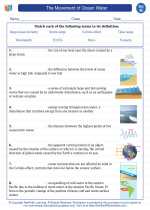Lava
Lava is molten rock that erupts from a volcano or fissure in the Earth's crust. It is a type of magma that reaches the surface and flows out as a liquid before solidifying.
Formation of Lava
Lava is formed when the intense heat and pressure within the Earth cause rocks to melt and become molten. This molten rock, known as magma, can rise to the surface through volcanic activity and erupt as lava.
Composition of Lava
Lava is primarily composed of silicate minerals, such as feldspar, pyroxene, and olivine. It also contains gases, such as water vapor, carbon dioxide, sulfur dioxide, and hydrogen sulfide.
Types of Lava
There are different types of lava, including:
- Basaltic Lava: This type of lava is low in viscosity and flows easily. It often forms extensive lava flows and can travel long distances from the volcanic vent.
- Andesitic Lava: Andesitic lava has higher viscosity than basaltic lava and may form domes and short, thick flows.
- Rhyolitic Lava: Rhyolitic lava is the most viscous type and tends to form thick, short flows and lava domes.
Effects of Lava
When lava flows from a volcano, it can have various effects on the surrounding environment, including:
- Lava Flows: Lava can destroy vegetation, buildings, and infrastructure in its path as it flows downhill.
- Lava Bombs: Large, solidified pieces of lava, known as lava bombs, can be ejected from a volcano during an eruption and pose a risk to nearby areas.
- Lava Tubes: As lava flows, it can create tunnels known as lava tubes, which may be used for transportation or serve as habitats for certain organisms.
Study Guide for Lava
To study lava, consider the following questions:
- What is the difference between magma and lava?
- How does the composition of lava vary among different types, such as basaltic, andesitic, and rhyolitic lava?
- What are the primary factors that influence the viscosity of lava?
- What are the potential hazards associated with lava flows?
- How do lava tubes form, and what are their significance?
Additionally, it can be helpful to study specific examples of volcanic eruptions and their associated lava flows, as well as the geological features formed by lava, such as volcanic cones and lava plateaus.
.◂Science Worksheets and Study Guides Eighth Grade. The Movement of Ocean Water
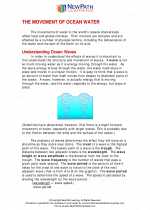
 Worksheet/Answer key
Worksheet/Answer key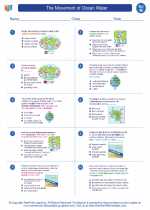
 Worksheet/Answer key
Worksheet/Answer key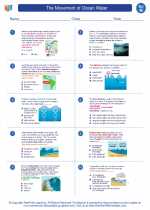
 Worksheet/Answer key
Worksheet/Answer key
 Vocabulary/Answer key
Vocabulary/Answer key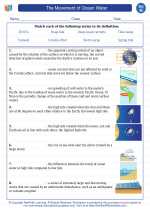
 Vocabulary/Answer key
Vocabulary/Answer key